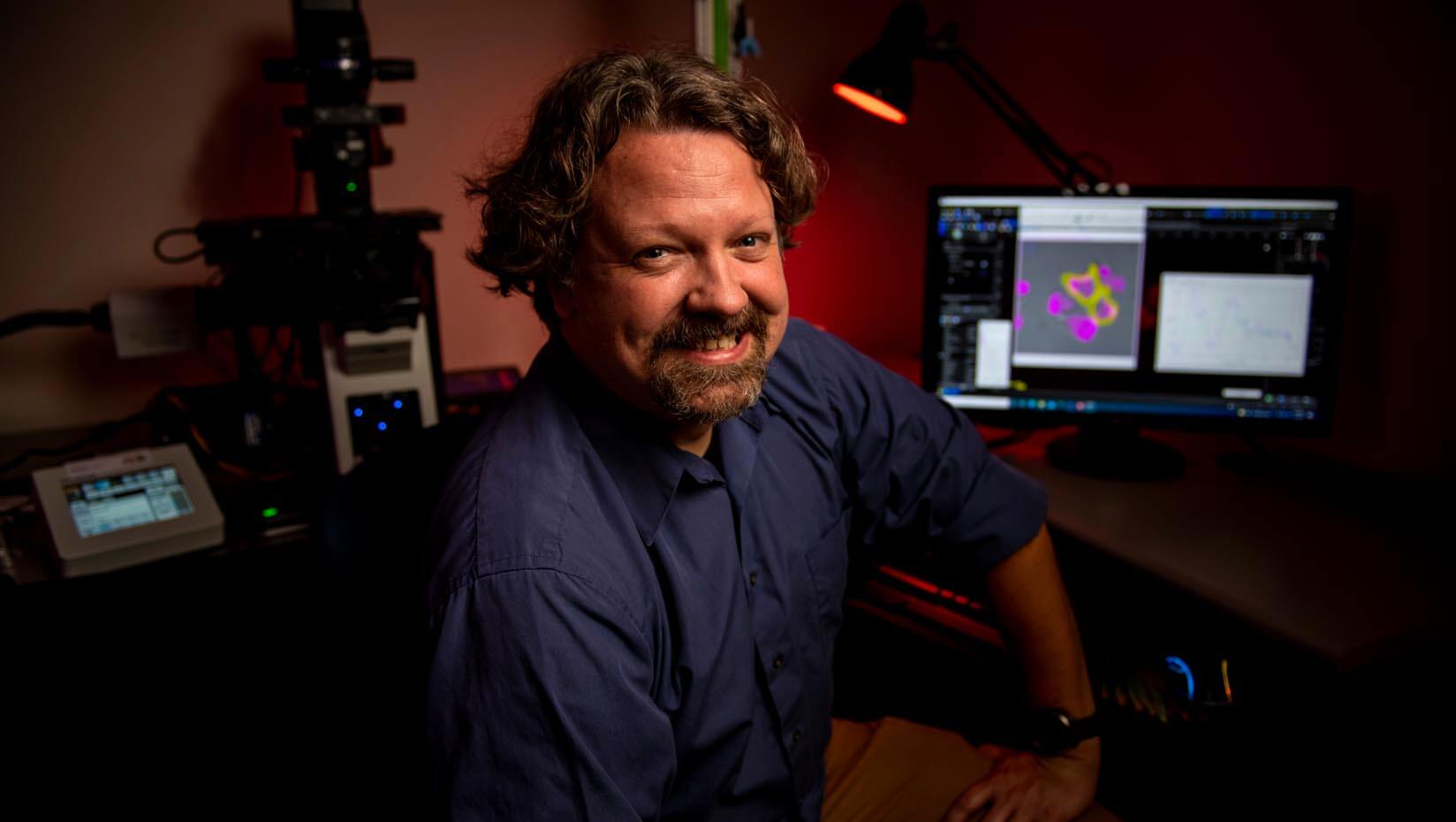
Kelley explores what directs septin proteins in yeast mating
The ways yeast and human cells communicate are similar, according to University of Maine assistant professor of biochemistry Joshua Kelley.
Each makes use of a family of proteins called G-protein coupled receptors that detect signals outside the cell, and transfer that information into signals inside the cell. These types of receptors are responsible for, among other things, sight, smell, metabolic regulation and immune function. Deeper insight into how yeast cell signalling works can tell scientists more about how human cells function, particularly to control bodily functions and combat disease.
Kelley is exploring a particular component of signaling in yeast cells in his latest study: the coordination of proteins called septins during mating between cells. The National Institute of General Medical Sciences, housed within the National Institutes of Health, awarded Kelley about $430,000 for the study.
The UMaine biochemist says yeast cells mate by organizing their cytoskeleton to point toward a mating partner, and then growing the cell in that direction. Once they contact each other, they fuse and join their nuclei, much like human reproduction. Septins, which form barriers on the inside of cell membranes, are necessary for the yeast to grow toward their mating partners, Kelley says.
The G-protein coupled receptor in the yeast cell sends signals that tell septins when and where to go during the mating process and formation of the new cell. Kelley says he wants to learn how the receptor determines and signals when to deploy the septins and where to place them.
Yeast projection during mating is similar to the formation of dendritic spines on neurons, Kelley says, adding that septins are involved in both. Studying this mating process may inform future research into how dendritic spines are shaped, as well as how disease can alter them, he says.
“It’s about how cells organize these proteins and what signalling circuitry goes on to make sure the right things are put in the right place at the right time,” Kelley says. “There’s just a lot of human biology controlled by this class of protein.”
To conduct his study, Kelley will create yeast strains that express fluorescent proteins, such as septins or potential regulators for them and place them in a microfluidic gradient chamber to generate a field of mating signal in the environment around the yeast. He will then watch what happens by live cell microscopy and gather data via computational image analysis.
Kelley hypothesizes that the protein Boi2, which may be related to a human protein called anillin, influences the signaling used to direct septins in yeast mating. Anillins, according to the UMaine researcher, help regulate septin placement in cell division. He says he has witnessed the anillins in yeast change their localization in response signals from the G-protein coupled receptor, which directs the septins.
“We have evidence that they control where certain parts of the cytoskeleton go,” during yeast mating, Kelley says. “It’s not something that’s been explored, and we’re not certain how this control is mediated.”
Kelley says he plans to recruit two-to-three graduate students and at least three undergraduate students to assist him with the study this fall.
“The students in my lab are doing molecular biology, doing yeast genetics, doing biochemistry, doing programming, building microfluidic devices,” he says, “they end up getting their feet wet in a lot of different areas.”
The new study adds to the ongoing research conducted at Kelley’s lab to explore how cells sense and respond to their environment with a common process known as gradient tracking. Gradient tracking involves the signaling pathways of the G-protein coupled receptor, the regulation of which is of particular interest to Kelley’s research. Yeast is used as a model organism for his studies.
“I like finding new connections between signaling pathways that haven’t really been looked at,” Kelley says, “how signals are controlled between time and space. Those are the types of questions I gravitate toward.”
Contact: Marcus Wolf, 207.581.3721; marcus.wolf@maine.edu
